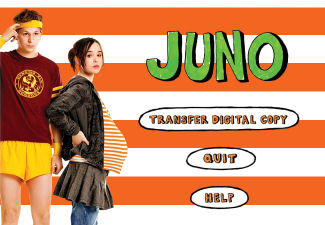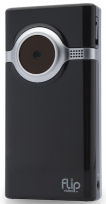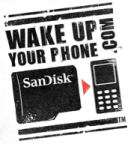Memorex SimpleSave DVD For Automatic Backup
Back up your stuff! Everybody knows you should, but it's just so clumsy to do, and who has the time, or you run out of backup discs or storage -- and that's for us tech people, who should know better! For many consumers, backup is just not feasible at all -- they need not one-click backup, but zero-click backup -- automatic backup to a removable device, with no software installation, no setup, no messing around with details.
Imation/Memorex has launched a line of recordable DVDs that get right to the heart of these issues --
 The Memorex SimpleSave Back-Up DVDs are recordable discs that have a pre-recorded region that launches back-up software directly from the disc.
The Memorex SimpleSave Back-Up DVDs are recordable discs that have a pre-recorded region that launches back-up software directly from the disc.
There's no fuss, no configuring -- the software automatically scans your disc and backs up all your photo or music files, prompting for additional discs if needed. (See press release)
To make backup even easier for consumers, the discs are available in separate products for specific types of files: Photo (5-pack for $12.99) and Music (3-pack for $9.99). Just insert the disc, and all files of these types are found and archived. (Of course, you can specify advanced backup options for specific file types or locations.)
The software used on the discs is actually DVD Click Free Backup from Storage Appliance Corp. in Ontario, Canada. Another way to use this idea is for backing up to hard drive -- the ClickFree Backup HD700 external hard drive, introduced in January for $169, is a 120 GB USB 2.0 hard drive that runs the ClickFree Automatic Backup software. Just plug in the drive, and the software auto-runs and automatically backs up files from your computer. (Again, you can override the defaults and use your own settings.) A similar product was shipped earlier -- the Polaroid Media Backup Photo Edition -- the 40 GB drive for around $119 stores up to some 40,000 digital photos.
See my High-Def / DVD Gallery for more on optical disc formats and media.
See my Portable Storage Gallery for details and comparisons on memory cards, USB drives, and hard disk storage.

 The studios do understand this, and so, for example, Fox has been experimenting with an ongoing effort to provide digital files of movies along with its Blu-ray discs, what it calls
The studios do understand this, and so, for example, Fox has been experimenting with an ongoing effort to provide digital files of movies along with its Blu-ray discs, what it calls  Pure Digital has released a new version of its Flip Video line of portable and fun camcorders -- the
Pure Digital has released a new version of its Flip Video line of portable and fun camcorders -- the  SanDisk has been promoting the use of microSD flash memory cards in its
SanDisk has been promoting the use of microSD flash memory cards in its  SanDisk recently announced
SanDisk recently announced 
 I've seen big computer rooms, and grids of mesh computers, but I'd never seen 400 computers hanging from the ceiling until I visited the WINLAB facility in North Brunswick, New Jersey.
I've seen big computer rooms, and grids of mesh computers, but I'd never seen 400 computers hanging from the ceiling until I visited the WINLAB facility in North Brunswick, New Jersey. So check out
So check out  The
The